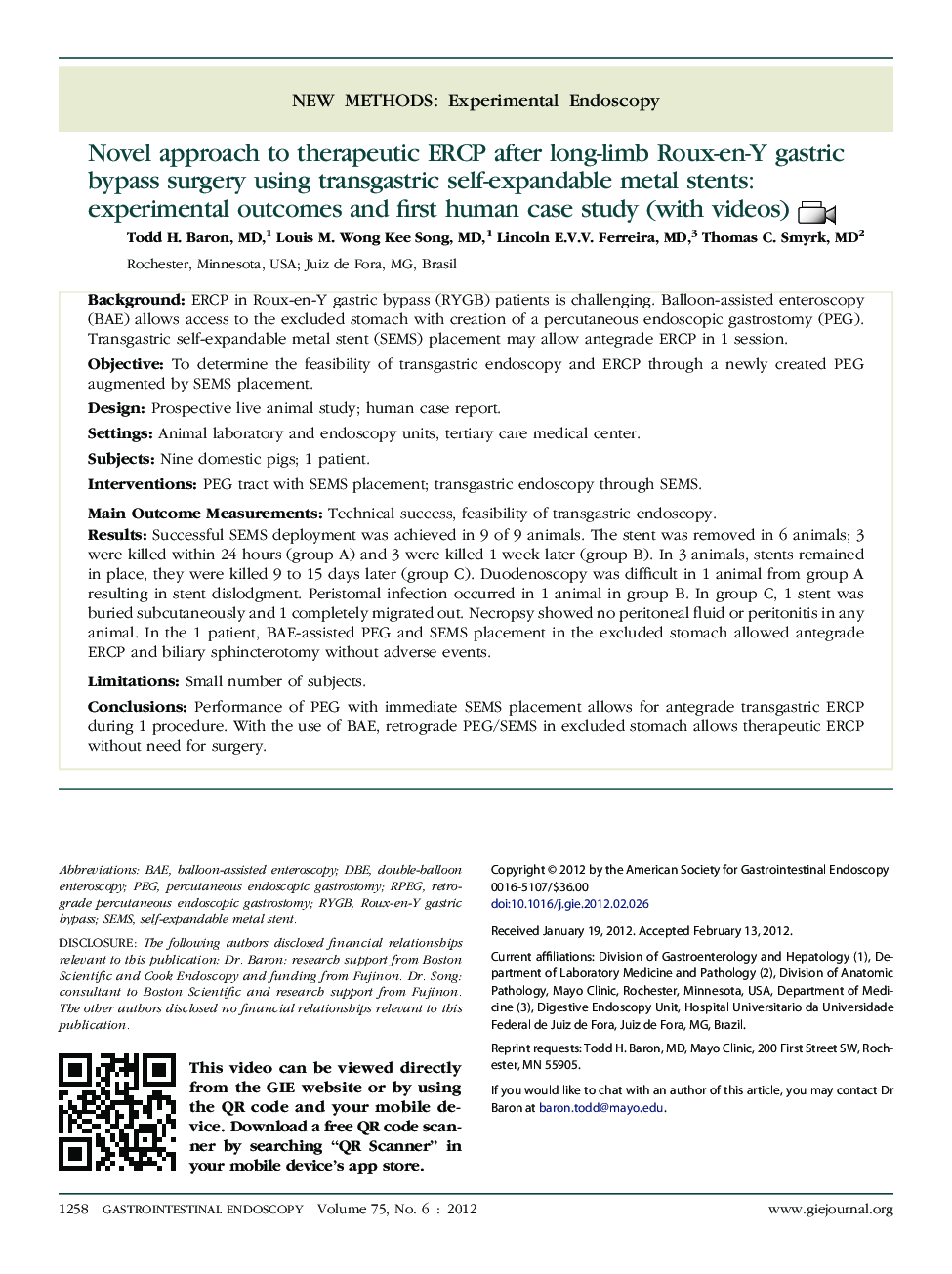| Article ID | Journal | Published Year | Pages | File Type |
|---|---|---|---|---|
| 3305010 | Gastrointestinal Endoscopy | 2012 | 6 Pages |
BackgroundERCP in Roux-en-Y gastric bypass (RYGB) patients is challenging. Balloon-assisted enteroscopy (BAE) allows access to the excluded stomach with creation of a percutaneous endoscopic gastrostomy (PEG). Transgastric self-expandable metal stent (SEMS) placement may allow antegrade ERCP in 1 session.ObjectiveTo determine the feasibility of transgastric endoscopy and ERCP through a newly created PEG augmented by SEMS placement.DesignProspective live animal study; human case report.SettingsAnimal laboratory and endoscopy units, tertiary care medical center.SubjectsNine domestic pigs; 1 patient.InterventionsPEG tract with SEMS placement; transgastric endoscopy through SEMS.Main Outcome MeasurementsTechnical success, feasibility of transgastric endoscopy.ResultsSuccessful SEMS deployment was achieved in 9 of 9 animals. The stent was removed in 6 animals; 3 were killed within 24 hours (group A) and 3 were killed 1 week later (group B). In 3 animals, stents remained in place, they were killed 9 to 15 days later (group C). Duodenoscopy was difficult in 1 animal from group A resulting in stent dislodgment. Peristomal infection occurred in 1 animal in group B. In group C, 1 stent was buried subcutaneously and 1 completely migrated out. Necropsy showed no peritoneal fluid or peritonitis in any animal. In the 1 patient, BAE-assisted PEG and SEMS placement in the excluded stomach allowed antegrade ERCP and biliary sphincterotomy without adverse events.LimitationsSmall number of subjects.ConclusionsPerformance of PEG with immediate SEMS placement allows for antegrade transgastric ERCP during 1 procedure. With the use of BAE, retrograde PEG/SEMS in excluded stomach allows therapeutic ERCP without need for surgery.
